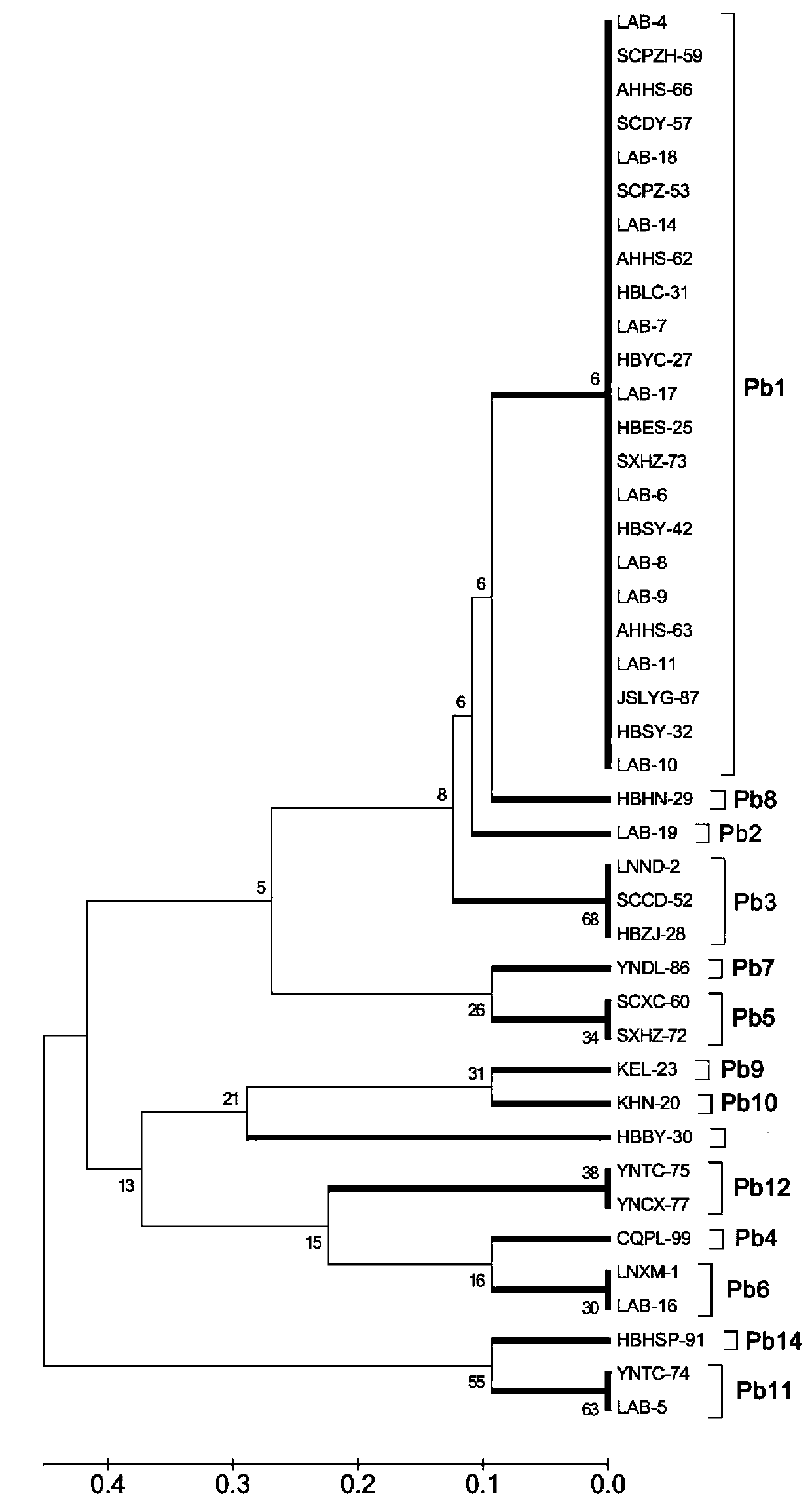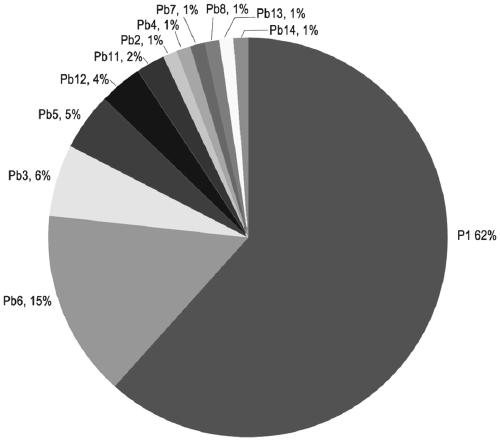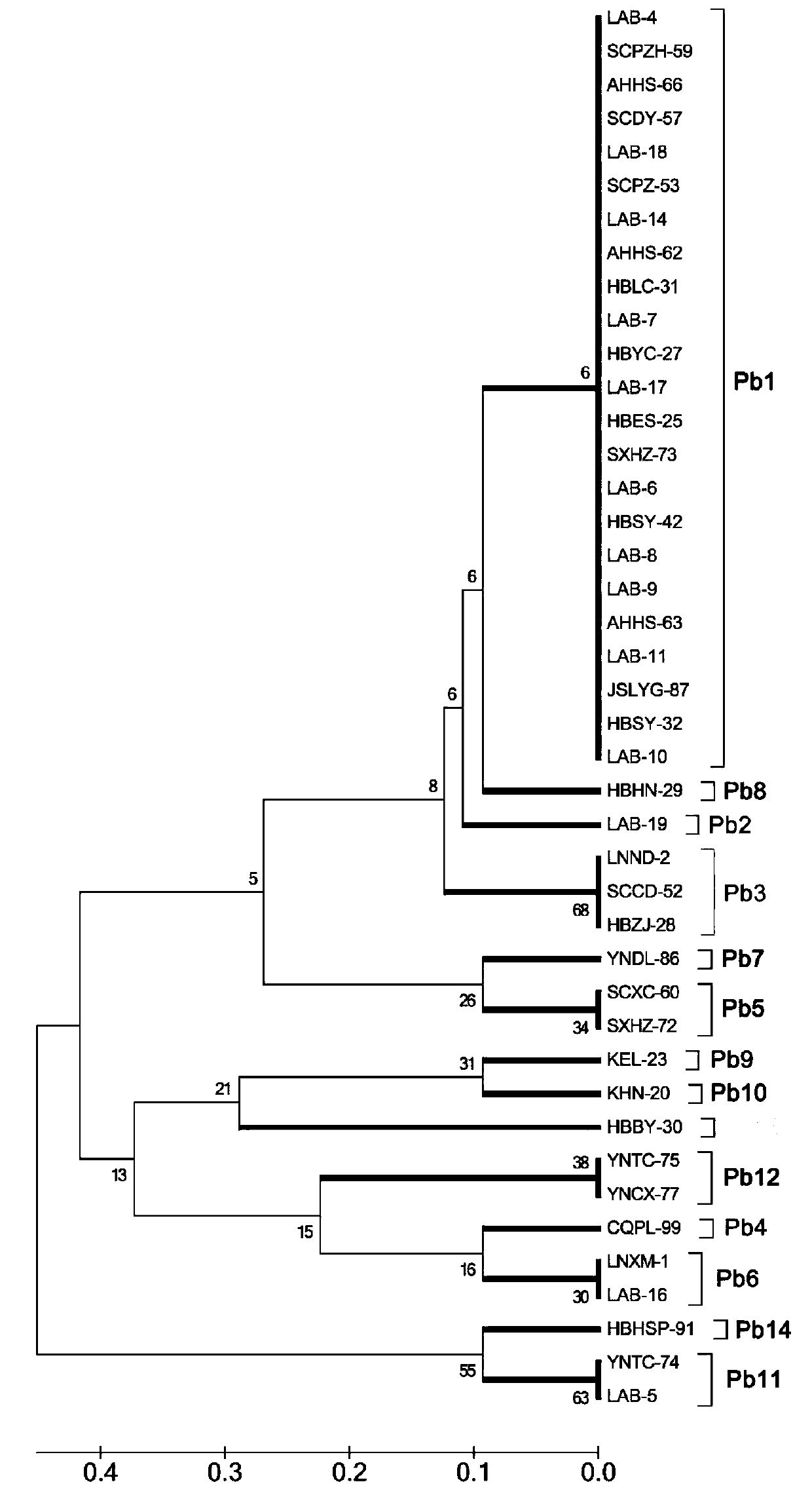Identification system and method of SCD plasmodiophora physiological race
A technology of physiological races and Plasmodium, applied in the direction of microorganism-based methods, biochemical equipment and methods, and microbial measurement/inspection, can solve the problem of affecting the breeding of disease-resistant varieties and the accurate identification of Plasmodium physiological races Sex and other issues, to achieve the effect of simple and easy to implement identification method, and speed up the breeding process
- Summary
- Abstract
- Description
- Claims
- Application Information
AI Technical Summary
Problems solved by technology
Method used
Image
Examples
Embodiment 1
[0035] Example 1 An SCD (Sinitic Clubroot Differentiation system) Phytophthora physiological race identification system (hereinafter referred to as the SCD identification system), as shown in Table 1, P1-P14 in Table 1 is the physiological race type.
[0036] Table 1 Identification system of physiological races of SCD Plasmodium
[0037]
[0038] Embodiment 2 The acquisition route and verification of the SCD identification system of Embodiment 1
[0039] Step 1. Collect host material
[0040] Hosts of 12 Chinese cabbage inbred lines (codes H1-H12): including 11 clubroot-resistant lines and 1 susceptible line used in this study. See Table 2 for host information. The clubroot-resistant Chinese cabbage inbred lines (H1-H11) were used for stable and accurate physiological race classification system host selection, and the susceptible line H12 was used as a positive control for clubroot resistance tests. The hosts of the Williams differential system: Badger shipper, Jersey Que...
Embodiment 3
[0075]Embodiment 3 Comparison and advantages of the SCD identification system of the present invention and the prior art
[0076] (1) Brief description of existing foreign identification systems: the economic losses caused by clubroot of cruciferous crops are well known. Accurate identification of the physiological race of Plasmodium is one of the prerequisites for the selection of disease-resistant varieties. Scientists from all over the world have made great efforts on the development of the race differentiation system of Plasmodium brassica and achieved remarkable results. However, the previously developed Williams differential system, the ECD system, and the differential system developed by Somé et al. were unable to distinguish some races in Canada, Korea, Japan, and China (References (4)–(6), Kuginuki et al. 1999; Kim et al. 2016; Strelkov et al. 2018). The hosts used in the Williams identification system and the identification system of Somé et al. (ref. (3)) did not ...
PUM
 Login to View More
Login to View More Abstract
Description
Claims
Application Information
 Login to View More
Login to View More - Generate Ideas
- Intellectual Property
- Life Sciences
- Materials
- Tech Scout
- Unparalleled Data Quality
- Higher Quality Content
- 60% Fewer Hallucinations
Browse by: Latest US Patents, China's latest patents, Technical Efficacy Thesaurus, Application Domain, Technology Topic, Popular Technical Reports.
© 2025 PatSnap. All rights reserved.Legal|Privacy policy|Modern Slavery Act Transparency Statement|Sitemap|About US| Contact US: help@patsnap.com



